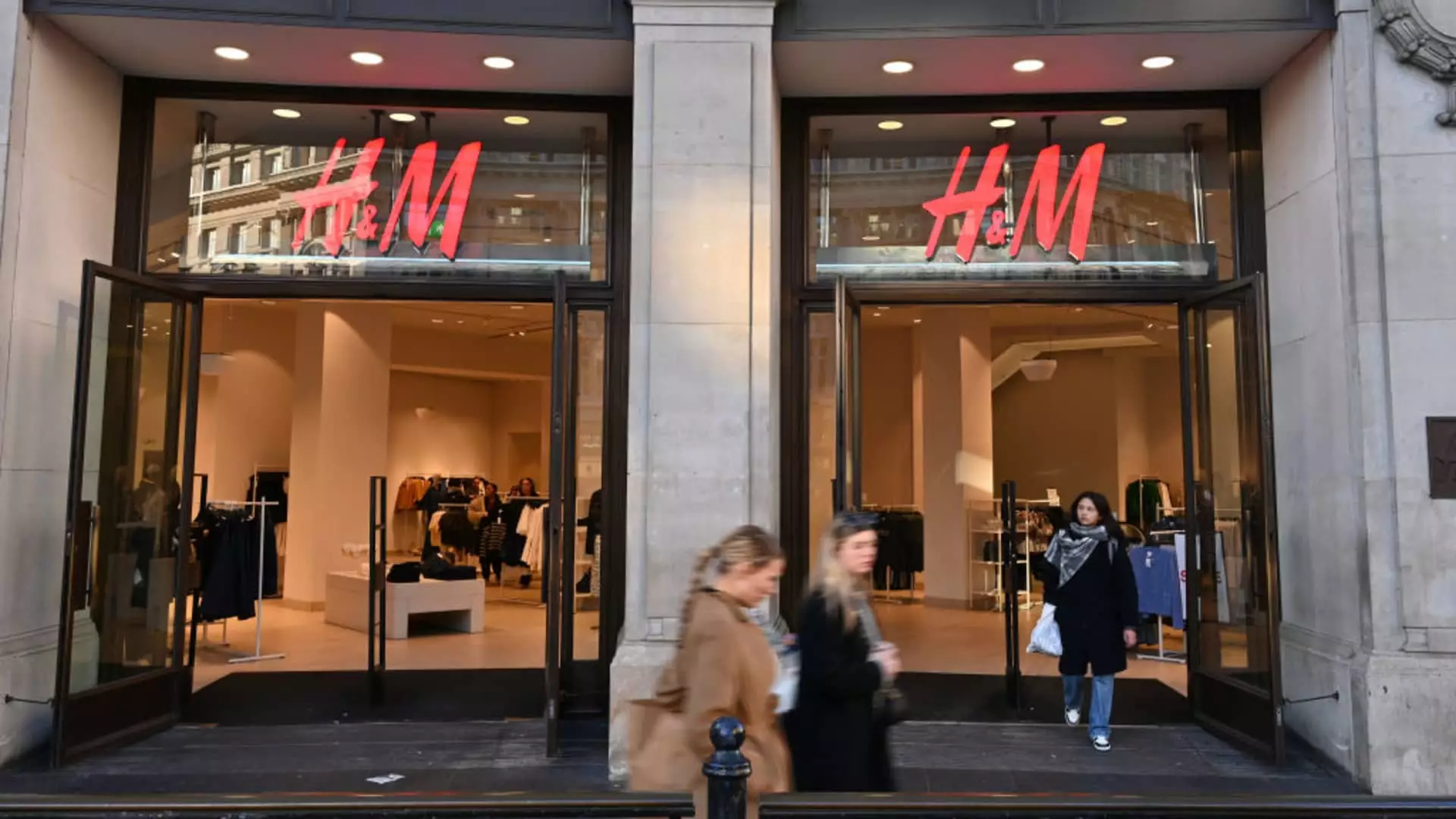H&M, one of the world’s leading fashion retailers, recently reported disappointing fourth-quarter sales that resulted in a over 5% drop in its stock price. This decline is indicative of ongoing challenges the company is facing despite a slight increase in operating profit. The Swedish retail giant’s sales for the final quarter were reported at 62.19 billion Swedish krona, which fell short of the 63.48 billion krona predicted in a Reuters poll. While it is noteworthy that sales did increase by 3% in local currencies, it raises concerns about H&M’s ability to meet consumer expectations during peak shopping periods.
The company attributed the shortfall, in part, to the timing of Black Friday, which occurred later in the shopping calendar this year. However, H&M’s management is optimistic as they noted an uptick in sales during December and January—signifying a positive trend entering the new fiscal year. Collectively, the company’s performance in 2024 showed a modest sales rise of 1% in local currencies, totaling 234.58 billion Swedish krona. This illustrates a reliance on specific market segments, including womenswear, sportswear, and online shopping, which seem to be the driving forces behind their revenue stream.
Despite the mixed sales results, H&M’s operational management demonstrated resilience. The full-year operating profit reached 17.3 billion Swedish krona ($1.57 billion), slightly surpassing the analyst forecasts. Notably, fourth-quarter operating profit also improved to 4.6 billion Swedish krona, exceeding preliminary expectations. This dual performance underscores the company’s ability to maintain profitability through effective cost controls, robust online sales, and popular womenswear offerings, a strategy which CEO Daniel Ervér lauded in recent statements.
Looking ahead, Ervér expressed cautious optimism regarding the 2025 outlook. He pointed to potential easing pressure on consumers, as broader economic challenges like inflation and interest rates may stabilize. The diversification of H&M’s supply chain could serve as a buffer against external geopolitical tensions that may adversely affect consumer sentiment. This strategic flexibility positions the company to navigate the often unpredictable landscape of the global fashion industry.
The competitive landscape for H&M is increasingly challenging. The fashion retailer finds itself in fierce competition with fast-fashion competitors like Zara and lower-cost alternatives such as Shein. In light of these pressures, H&M’s decision to abandon its earnings margin target for 2024 reflects a strategic pivot aimed at safeguarding profitability amidst rising operational costs and intensifying market rivalry.
The appointment of CEO Ervér at the beginning of 2024 marked a significant shift for H&M, with an emphasis on revitalizing the brand and accelerating its recovery from previous financial strains. During a recent media briefing, Ervér elaborated on ambitious targets—including a long-term sales growth objective of at least 10% annually and an operating margin above 10%. Moreover, H&M aims to drastically reduce greenhouse gas emissions by 56% by 2030 compared to 2019 levels—a commitment that not only highlights a push for sustainability but also addresses shifting consumer priorities towards environmental responsibility.
While H&M’s latest quarterly results reveal incremental profit growth, the company’s failure to meet sales forecasts during a critical shopping period raises significant concerns about its market strategies. As consumer trends evolve and competition intensifies, H&M needs to remain agile and innovative. The focus on core business areas, combined with an emphasis on operational efficiency and sustainable practices, could serve as critical determinants of its success moving forward. Continuous investment in online capabilities and responsiveness to market demands will be crucial for H&M to regain its footing in the fluctuating fast-fashion arena. The company’s quest for long-term, profitable growth is admirable, but it must demonstrate that it can withstand and adapt to the pressures of an increasingly competitive retail landscape.

